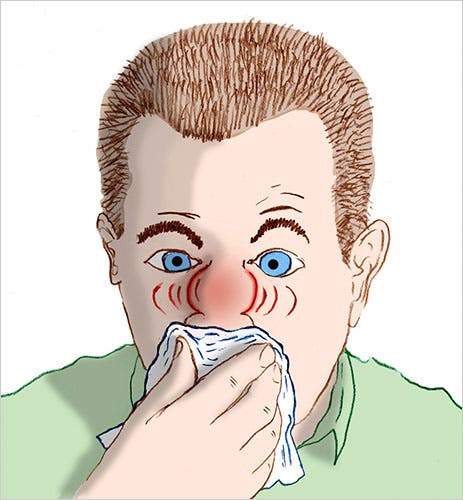A 68-year-old patient with cerebrospinal fluid (CSF) leak secondary to the forceful blowing of the nose and Valsalva maneuver leading to pneumocephalus (presence of intracranial gases).
A 68-year-old male presented with headaches on the left side of the head with a feeling of postural imbalance for the past few days. His symptoms started after the patient had attempted multiple times to blow his nose and attempting Valsalva maneuvers as he was suffering from serous rhinitis. The patient was pointing towards the left temporal-parietal side of the head.
History revealed that the patient was a known case of hypertension and diabetes mellitus type 2 for the past 5 years. His usual medications include acetylsalicylic acid-ASA-ramipril and metformin. There was no history of trauma, neither recent nor past, no recent travels, infections, syncope/presyncope, or surgery.
On examination, the patient was alert, stable and generally in good condition. His vitals were: blood pressure of 130/80, heart rate of 86 beats per minute, a respiratory rate of 14 breaths per minute, a body temperature of CT 36 ℃, and oxygen saturation on pulse oximetry was 98% on room air.
Glasgow Coma Score (GCS) was 15/15, and the neurological examination revealed intact sensations, with normal cranial nerve examination. There were no motor or sensory deficits. Psych evaluation was also normal. Romberg sign was positive with multiple oscillations and lateral pulsion, more on the left. Nystagmus was absent even after stimulation maneuvers.
Cerebellar tests were performed, which were positive. When the patient was asked to perform the index-nose test, there was a clear asymmetry on the left.
The rest of the physical examination was unremarkable.
Previous investigations revealed carotid atheromasia (20%) on echocolordoppler examination and mild hypertensive retinopathy without any visual disturbances. The electroencephalogram was normal.
A computed tomography (CT) scan was performed, which showed “an air bubble at the level of the left cerebellar pontine angle cistern, near the petrous rocks. Multiple minute air bubbles were appreciated within the cranial cerebellar hemisphere ipsilateral immediately below the tentorium.
The patient was managed conservatively and was counseled regarding the avoidance of precipitating factors, including, avoid coughing, blowing the nose, sneezing, or Valsalva maneuvers.
He showed substantial symptomatic improvement in the following two weeks. Brain CT scan also revealed the resolution of the previous findings.
Since the patient had improved, it didn’t seem necessary to perform a myelogram CT scan to locate a loss of cerebrospinal fluid; therefore, the patient did not undergo any other investigations.
Reference:
Magro VM, Coppola C, Scala G, Verrusio W (2019) A Case of Postural Instability with Unusual Aetiology in an Elderly Patient. Int J Brain Disord Treat 5:030. doi.org/10.23937/2469-5866/1410030.



